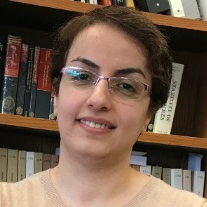Computational, Experimental, and Theoretical Aspect of Fractional Order Operators
A special issue of Mathematics (ISSN 2227-7390). This special issue belongs to the section "Difference and Differential Equations".
Deadline for manuscript submissions: closed (15 August 2022) | Viewed by 19317
Special Issue Editors
Interests: approximation theory; Bayesian method and uncertainty quantification; computational methods; fractional calculus; fractal media and fractional viscoelasticity; fractional poisson process; optimal control; orthogonal functions and their applications to dynamic systems; population genetics and coalescence theory; spectral methods
Special Issue Information
Dear Colleagues,
Fractional calculus has attracted considerable interest because of its ability to model complex phenomena such as continuum and statistical mechanics, viscoelastic materials, high-frequency price dynamics in financial markets, and biological systems such as population genetics. While the fractional integral has been used to describe the fractal structure of materials, which leads to new thermodynamic relations, the fractional derivative could be used to describe viscoelasticity, thermal and chemical diffusion, and light–matter interactions in materials. On the other hand, time-fractional generalizations of the Poisson process, which are based on the fractional Kolmogorov–Feller equation, not only provide a good phenomenological model for high-frequency price dynamics in financial markets but also play a critical role in deriving the fractional coalescent in population genetics where the order of the fractional derivative shows environmental heterogeneity in the population. The strong role of fractional calculus in modeling complex fractal structure–fractional property relations opens up many opportunities to advance our understanding and design of novel materials, advanced structures, and intelligent systems.
The mathematical tools required for these fields include a wide range of problems, such as fractional differential equation, fractional partial differential equation, and fractional control systems where the fractional derivative has been replaced with the integer derivative to create a new set of necessary conditions that must be satisfied.
Dr. Somayeh Mashayekhi
Dr. William S. Oates
Guest Editors
Manuscript Submission Information
Manuscripts should be submitted online at www.mdpi.com by registering and logging in to this website. Once you are registered, click here to go to the submission form. Manuscripts can be submitted until the deadline. All submissions that pass pre-check are peer-reviewed. Accepted papers will be published continuously in the journal (as soon as accepted) and will be listed together on the special issue website. Research articles, review articles as well as short communications are invited. For planned papers, a title and short abstract (about 100 words) can be sent to the Editorial Office for announcement on this website.
Submitted manuscripts should not have been published previously, nor be under consideration for publication elsewhere (except conference proceedings papers). All manuscripts are thoroughly refereed through a single-blind peer-review process. A guide for authors and other relevant information for submission of manuscripts is available on the Instructions for Authors page. Mathematics is an international peer-reviewed open access semimonthly journal published by MDPI.
Please visit the Instructions for Authors page before submitting a manuscript. The Article Processing Charge (APC) for publication in this open access journal is 2600 CHF (Swiss Francs). Submitted papers should be well formatted and use good English. Authors may use MDPI's English editing service prior to publication or during author revisions.
Keywords
- Fractional calculus
- Fractional differential equation
- Fractional partial differential equation
- Fractional control systems
- Fractional integral equation
- Fractional order modeling






